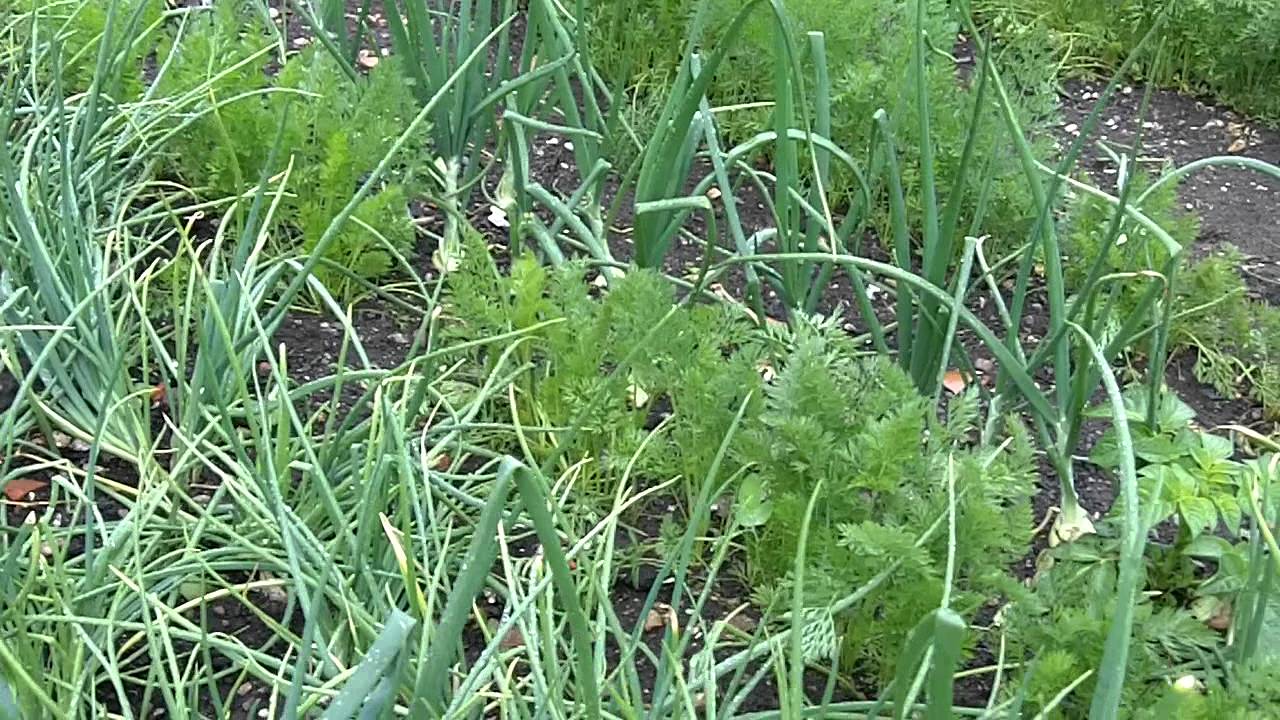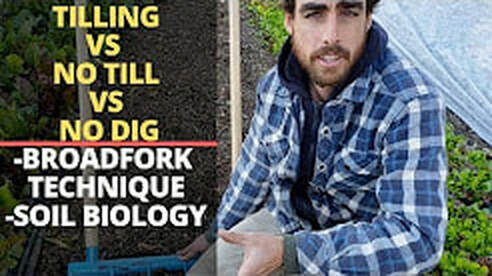|
4/17/2019 2 Comments Growing CarrotsGrowing carrots has it's challenges - especially with our clay soil. But knowing a few tips will help you grow them successfully. First thing to know is that they have a long germination period ranging from 10 to 20 days. It's best to sow the seed directly in the ground, and keeping the seed bed consistently moist is key for good germination. Covering them with burlap or a 1x4 board will help keep the soil moist (check daily and remove after two weeks or once the seedlings have emerged). Overseeding will help ensure a good crop (up to 10 seeds per inch), and thinning is a must (2 -4 inches apart) to allow each plant enough room to size up. Watch this video from Renee's Garden Seeds for helpful thinning tips: SOIL BED PREP This root crop will do best when planted in full sun (6-8 hours) and in soil that is well-drained. Sandy soil is ideal, but amending any soil type with compost and cultivated to a depth of 12 inches, should keep them happy. VARIETIES TO GROW Nantes and Danvers are probably the most well-known and both are heirlooms. Nantes are good for cooking and fresh eating, but the skin is thin so they do not store well. The flavor is sweet and can mature to 7" long, but they can be pulled early and eaten as baby carrots. Danvers is probably the most reliable in the garden. They grow to about 8", are good for cooking, not as sweet for fresh eating, but they store well. Just for fun, venture away from orange carrots and grow purple or red varieties. 'Purple Sun', 'Atomic Red', 'Cosmic Purple' are a few on our seed racks this year. New orange varieties in seed packets include 'Shin Kuroda (a short one)', and 'King Midas (long and sweet). If your soil is less than ideal and you've had trouble in the past getting carrots to develop, choose a short, round variety like 'Romeo'' or 'Shin Kuroda'. OTHER GROWING TIPS: * Mix seed half and half with sand and scatter randomly across the bed. * If this is your first time planting carrots, use seed tape. It has the tiny seeds evenly spaced on a biodegradable paper 'tape' and requires minimal thinning. * Sow carrot seeds beginning mid April, and continue to plant every 3 weeks through mid summer. COMPANION PLANTING *Carrots grow well with salad greens and other root crops like radishes. *Onions and chives make good companions in the garden repel the carrot rust fly. *Marigolds, nasturtiums, chamomile and calendula planted nearby will attract beneficial insects. * Avoid planting carrots and dill together. Even though they taste good together in the kitchen, dill does no favors to the carrot in the garden. *Another foe to the carrot is the tomato. In fact, if your carrots have been stunted in the past, it could be from being planted too close to tomatoes which excrete a chemical in the soil that carrots don't like. GROWING GIANT CARROTS For most gardeners, growing carrots is rewarding enough when the harvest is ready and we taste their homegrown sweetness. But for a few, the goal is to grow the longest or the heaviest carrot. Currently, the heaviest carrot was grown by Chris Qualley in Minnesota and weighed in at 22 lbs! It's pretty interesting to learn how these giant vegetables are grown. Click on this link - you may learn a few more tips on growing better carrots, or you may be inspired to grow your own giant veg.
2 Comments
4/11/2019 0 Comments Hip & Healthy HouseplantsHouseplants are making a comeback and are becoming an important part of your indoor décor. Ditch the plastic pots and select stylish containers that reflect your personal style. Choose from ceramic, terra cotta, wood and metal to bring color and texture into your interior space. Don’t forget to use soil toppings like moss and stones for interest. Succulents are the easy-to-care-for choice for Millennials and even Generation Z. With minimal water requirements, just place them in a sunny location, and they virtually take care of themselves. Choose from various types of echeveria, cactus, agave, jade, aloe and more. In addition to using trendy pots for your plants, hanging planters are back from the past. If you aren’t quite ready for that macramé hanger again, there are other varieties that use natural jute or metal chain for hanging. English Ivy, Heart-leaf Philodendron and Golden Pothos are great houseplants to hang. Houseplants that Purify the Air In the late '80s, NASA and the Associated Landscape Contractors of America studied houseplants as a way to purify the air in space facilities. They found several plants that filter out common volatile organic compounds (VOCs). Lucky for us, these plants can also help clean indoor air on Earth, which is typically far more polluted than outdoor air. Recommendation: 1 plant per 100 square feet in home. Aloe (Aloe vera) - Prefers sun and dry soil.
Spider plant (Chlorophytum comosum) – Pet Friendly Thrive in cool-to-average home temperatures and prefer dry soil. Bright indirect sunlight keeps them growing best. Gerbera daisy (Gerbera jamesonii) – Pet Friendly Needs at least six hours of direct sunlight every day. The brightly colored cut blooms can last as long as two weeks. Snake plant (Sansevieria trifasciata 'Laurentii') – “Mother-in-law’s tongue” Low light and dry out between waterings Golden pothos (Scindapsus aures) Needs bright, indirect light. Don't overwater or you'll end up with a case of root rot. Perfect plant for use in hanging pots. Red-edged dracaena (Dracaena marginata) Moderate sunlight – can eventually grow tall. English ivy (Hedera helix) Grows best with moist soil and four or more hours of direct sunlight each day. Great for putting in hanging pots. Chinese evergreen (Aglaonema Crispum) - they thrive in low light and will grow in places where other plants won't grow. They prefer slightly humid air. Heart leaf philodendron (Philodendron oxycardium) - They thrive with indirect light and very little maintenance. Great for hanging planter. Peace lily (Spathiphyllum) - Shade and weekly watering are all the peace lily needs to survive and produce blooms. This spring we're focusing on being rooted in wellness. It's been energizing to discover the connection between gardening and wellness. Last Saturday, March 30, we delved into the seven areas of wellness and discussed how gardening fulfills each of those seven aspects of being healthy in mind and body: -physical, emotional, social, intellectual, spiritual, environmental, and occupational. For those of you who were at that presentation, we asked you to fill in this blank: 'I garden, therefore I am more ______. As recent studies have shown, most of us do not garden to save money, but rather for it's emotional benefits. What a pleasure to hear your answers:'I garden, therefore I am more . . . 'at peace', 'centered', 'fulfilled', 'rooted'. Yes! This is why we garden! Yes, gardening can help fight depression. Yes, getting your hands in the soil can boost not only your mood, but also your immune system. And yes, gardening keeps us mindful and present in the moment. Last Saturday, we also shared a few of our favorite feeds, apps, and blogs that inspire us. We share them again here with the hopes to inspire you to get excited about gardening - whether you're growing your own food, planting a container of herbs or flowers, or decorating your home with houseplants and succulents. For those of you who grow your own food, particularly growing for the health of it, this app FROM SEED TO SPOON,is such a must. It helps you discover which vegetables, fruits, and herbs are good for whatever health problem you are dealing with: anemia, bone & joint health, brain & memory, cancer-fighting, energy, GI health, heart health, inflammation & pain, thyroid, and more. Not only does it list plants to grow for each area listed above, but it tells you how to grow them. Learn more about this app here. A Way to Garden with Margaret Roach is an award-winning website, blog, and podcast. We've been following her for years and every week learn something new. Lately Margaret has been interviewing specialists in each horticulture field which is always interesting to get advice from those who grow for a living! You'll find a wealth of information on her website here. * Epic Gardening is a newer find for me and I am enjoying Kevin Espiritu's daily podcasts. A young California gardener, his focus is urban farming, hydroponics, aquaponics, houseplants, and battling garden pests and diseases naturally. Knowledgeable and enthusiastic about gardening. you'll find Epic Gardening here as well as on YouTube, Instagram, podcasts, and Facebook. * One of the most inspiring blogs on container gardening is written by Deborah Silver, owner of Detroit Garden Works. On her blog, Dirt Simple, she shares an honest and open look at how they construct their seasonal container plantings they create for upscale homeowners in the surrounding Detroit area. Discover her unique style here on her website. * And finally, a new one I came across this morning. Nature's Always Right is the blog/podcast of another young urban farmer in San Diego, California who has a ton of how-to videos on YouTube. I'm just fascinated with these young people who are growing for markets and finding ways to do it naturally. It's refreshing and exciting. Hope you'll take the time to look him up as well as a few of the others.
Until next time, join us on Instagram @btowngardens and on Facebook. Keep growing! Tracy Hankwitz Burlington Garden Center General Manager & Horticulturist |
|
|
STORE INFO
5205 Mormon Road Burlington, WI 53105 262.763.2153 |














